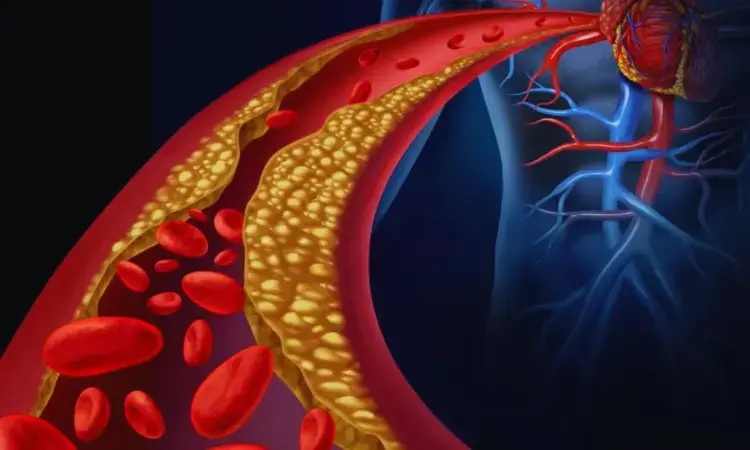- Home
- Medical news & Guidelines
- Anesthesiology
- Cardiology and CTVS
- Critical Care
- Dentistry
- Dermatology
- Diabetes and Endocrinology
- ENT
- Gastroenterology
- Medicine
- Nephrology
- Neurology
- Obstretics-Gynaecology
- Oncology
- Ophthalmology
- Orthopaedics
- Pediatrics-Neonatology
- Psychiatry
- Pulmonology
- Radiology
- Surgery
- Urology
- Laboratory Medicine
- Diet
- Nursing
- Paramedical
- Physiotherapy
- Health news
- Fact Check
- Bone Health Fact Check
- Brain Health Fact Check
- Cancer Related Fact Check
- Child Care Fact Check
- Dental and oral health fact check
- Diabetes and metabolic health fact check
- Diet and Nutrition Fact Check
- Eye and ENT Care Fact Check
- Fitness fact check
- Gut health fact check
- Heart health fact check
- Kidney health fact check
- Medical education fact check
- Men's health fact check
- Respiratory fact check
- Skin and hair care fact check
- Vaccine and Immunization fact check
- Women's health fact check
- AYUSH
- State News
- Andaman and Nicobar Islands
- Andhra Pradesh
- Arunachal Pradesh
- Assam
- Bihar
- Chandigarh
- Chattisgarh
- Dadra and Nagar Haveli
- Daman and Diu
- Delhi
- Goa
- Gujarat
- Haryana
- Himachal Pradesh
- Jammu & Kashmir
- Jharkhand
- Karnataka
- Kerala
- Ladakh
- Lakshadweep
- Madhya Pradesh
- Maharashtra
- Manipur
- Meghalaya
- Mizoram
- Nagaland
- Odisha
- Puducherry
- Punjab
- Rajasthan
- Sikkim
- Tamil Nadu
- Telangana
- Tripura
- Uttar Pradesh
- Uttrakhand
- West Bengal
- Medical Education
- Industry
Lowering of BP, lipids may help regress subclinical atherosclerosis among some middle-aged individuals

Atherosclerosis, a systemic disease with an early onset, lacks a comprehensive understanding of its temporal dynamics, including progression and regression, especially in subclinical stages. The study found that risk factor control at a younger age helps in preventing atherosclerosis and its progression.
The study results were published in the journal Journal of the American College of Cardiology.
Despite progress in cardiovascular medicine, atherosclerotic CV disease (ASCVD) remains a major global health threat. Detecting subclinical atherosclerosis (SA) early is vital. Understanding the dynamics, determinants, and patterns of atherosclerosis in various vascular territories is limited. The PESA (Progression of Early Subclinical Atherosclerosis) study cohort, also known as PESA-CNIC (National Center of Cardiovascular Investigations)–Santander, has undergone distinctive serial multi-territorial imaging. This study explored the temporal disease dynamics of subclinical atherosclerosis in apparently healthy, middle-aged, asymptomatic individuals using data from baseline and 6-year follow-up 3DVUS imaging examinations.
The PESA (Progression of Early Subclinical Atherosclerosis) cohort study involved 3,471 participants aged 40-55 years, with 36% females, undergoing three serial 3DVUS imaging assessments of peripheral arteries at 3-year intervals. Subclinical atherosclerosis was quantified as global plaque volume (mm3), considering bilateral carotid and femoral plaque burden. Multivariable logistic regression models were developed to analyze factors influencing progression and regression, utilizing stepwise forward variable selection.
Results showed that over the 6-year period, 32.7% of the cohort experienced subclinical atherosclerosis progression, with 17.5% presenting incident disease and 15.2% progressing from prevalent disease at enrollment. Additionally, regression was observed in 8.0% of individuals with baseline disease. Notably, the impact of higher low-density lipoprotein cholesterol (LDL-C) and elevated systolic blood pressure (SBP) on 6-year subclinical atherosclerosis progression risk was more pronounced among participants in the youngest age stratum (P interaction = 0.04 and 0.02, respectively).
In conclusion, this study highlights that subclinical atherosclerosis progresses in one-third of middle-aged asymptomatic subjects over a 6-year period. Moreover, it suggests that atherosclerosis regression is possible in its early stages. The study underscores the influence of LDL-C and SBP on subclinical atherosclerosis progression, with a notable emphasis on the impact being more pronounced in younger participants. This finding implies that enhancing risk factor control, for LDL-C and SBP, in younger individuals could potentially contribute to preventing atherosclerosis and its progression. The long-term impact of such measures could significantly reduce the risk of clinical events associated with atherosclerosis. (Progression of Early Subclinical Atherosclerosis)
Further reading: Mendieta, G, Pocock, S, Mass, V. et al. Determinants of Progression and Regression of Subclinical Atherosclerosis Over 6 Years. J Am Coll Cardiol. 2023 Nov, 82 (22) 2069–2083. https://doi.org/10.1016/j.jacc.2023.09.814
BDS, MDS
Dr.Niharika Harsha B (BDS,MDS) completed her BDS from Govt Dental College, Hyderabad and MDS from Dr.NTR University of health sciences(Now Kaloji Rao University). She has 4 years of private dental practice and worked for 2 years as Consultant Oral Radiologist at a Dental Imaging Centre in Hyderabad. She worked as Research Assistant and scientific writer in the development of Oral Anti cancer screening device with her seniors. She has a deep intriguing wish in writing highly engaging, captivating and informative medical content for a wider audience. She can be contacted at editorial@medicaldialogues.in.
Dr Kamal Kant Kohli-MBBS, DTCD- a chest specialist with more than 30 years of practice and a flair for writing clinical articles, Dr Kamal Kant Kohli joined Medical Dialogues as a Chief Editor of Medical News. Besides writing articles, as an editor, he proofreads and verifies all the medical content published on Medical Dialogues including those coming from journals, studies,medical conferences,guidelines etc. Email: drkohli@medicaldialogues.in. Contact no. 011-43720751




